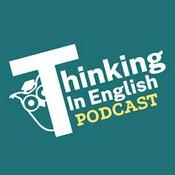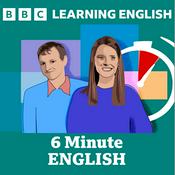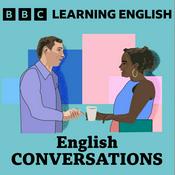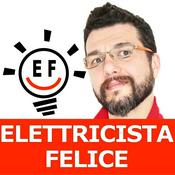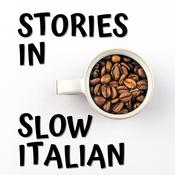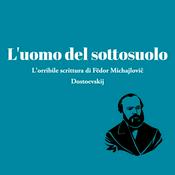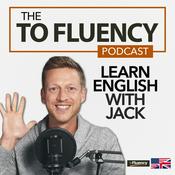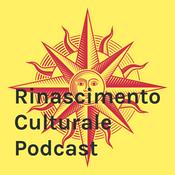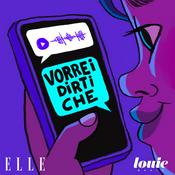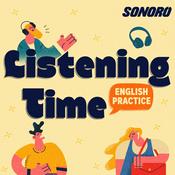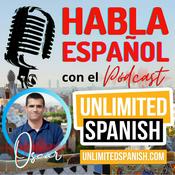194 episodi
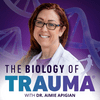
The Biology of Burnout: Why Pushing Through Stops Working
23/12/2025 | 26 min
If more self-care worked, it would've worked by now. In this episode, I share my own burnout story and introduce Claire—a patient whose chronic fatigue reveals a missing piece in how we understand stress. Through the research on learned helplessness and the metaphor of the elephant tied to a stick, this episode uncovers why so many of us feel stuck despite trying everything. Get the full episode breakdown at Biology of Trauma® Podcast - Episode 153: The Biology of Burnout: Why Pushing Through Stops Working In this episode you'll learn: [00:50] The Energizer Bunny Who Couldn't Push Anymore: Claire's story of chronic fatigue and missing her daughter's track meets [03:39] Why Self-Care Fails: The backwards truth about stress that keeps us stuck on the hamster wheel [05:13] Skill #1 — Generate a Good Stress Response: Why wimpy stress responses lead to burnout and trauma biology [06:36] Skill #2 — Complete and Reset: The exhale our bodies never learned to do [07:35] The Critical Line of Overwhelm: What happens when stress builds without reset [13:46] Learned Helplessness Research: The study on dogs that changed everything about understanding why we stay stuck [19:51] The Elephant Tied to a Stick: How early experiences program us to believe we cannot escape [11:19] The Voice Underneath: Recognizing the quiet belief that "other people can have good lives, but not me" [25:31] What Comes Next: Preview of how the researchers helped the dogs get unstuck Resources/Guides: Biology of Trauma book - Available now everywhere books are sold. Get your copy Related Podcast Episodes: Episode 31: Am I Tired, Or Is This Trauma? The Roots Of Fatigue with Dr. Evan Hirsch Episode 122: Shutdown Before Stress: The Misstep in Trauma Healing That Often Gets Missed

Your Freeze Questions Answered: Live Q&A with Dr. Aimie
19/12/2025 | 30 min
What if the grief you've been pushing away is trying to tell you something? In this mini episode, I open the vault on my live Q&A with Biology of Freeze students. These are the real questions people ask when they're in the deep work. The answers might surprise you. A caregiver asked how to show up for her family while grief keeps pulling her under. A practitioner wondered why her autoimmune clients can't take action. I share the exact practice I use when grief hits like a wave. Spoiler: it's not positive thinking. It's not pushing through. It's pausing long enough to let that part of you feel heard. In this episode you'll hear more about: The grief practice no one taught us: Why ignoring emotions or "staying positive" abandons the hurting part. I share the phrase I say out loud when grief shows up. It starts with: "I'm having a feeling right now." How to stay present to pain without drowning: The physical gesture I use to stay connected instead of numbing. It's not about making it go away. It's about not leaving that part alone. What grief is really pointing to: Behind every wave is something you deeply value. Give it space. You'll get clarity on how you want to live. Generational trauma lives in the body: I break down how ancestral patterns show up in beliefs, sensations, and even DNA. The good news? All of it can be rewired. Why autoimmune clients can't take action: This isn't motivation. It's learned helplessness from early overwhelm. The roots often start before you could talk. Body work sending you into shutdown? If dental work or sauna leave you crashed for weeks, it might not be emotional. Your detox pathways might not keep up. Music as nervous system medicine: Not all calming music actually calms you. I explain what tempo range shifts your heart rate. Our grief isn't a problem to solve. It's a messenger pointing us toward what matters most. 🎙️ Check out this week's main episode, Episode 152: Am I Too Old or Stressed To Get Pregnant? The Real Reason with Dr. Ann Shippy 💭 Try this practice this week: When a feeling shows up, pause. Say out loud: "I'm having a feeling right now." Put your hand where you feel it. Ask that part: "What do you want me to know?" Leave a review on Apple Podcasts, Spotify, or YouTube. It helps others find trauma-informed care.

Am I Too Old or Stressed To Get Pregnant? The Real Reason
16/12/2025 | 25 min
The same nervous system patterns that keep us stuck in survival mode may also be telling our body it's not safe to create new life. In this episode, I'm joined by Dr. Ann Shippy, a leading functional medicine physician and former chemical engineer who reveals the hidden biological barriers to conception. Get the full episode breakdown at Biology of Trauma® Podcast - Episode 152: Am I Too Old or Stressed To Get Pregnant? The Real Reason In this episode you'll learn: [00:01:20] Why the fertility narrative around age may be missing the bigger picture—and what's actually driving infertility rates [00:02:28] How one patient at 41 conceived easily after addressing heavy metals, microbiome imbalances, and hormonal dysfunction [00:04:16] The identity wound that infertility triggers—and why "am I enough?" surfaces when conception feels impossible [00:09:37] Why hope itself shifts biology and creates an environment welcoming to new life [00:10:45] How environmental toxins—even from healthy activities like golf—create hidden fertility barriers [00:11:48] The "time capsule" concept: How eggs and sperm collect information about stress, trauma, toxins, and nutrient status [00:13:55] The parallel between neuroception and fertility—both systems asking the same question about safety and capacity [00:16:41] Why infertility is fundamentally an energy problem—and how mitochondrial function determines whether the body says yes to new life [00:18:12] How pregnancy can deplete an already exhausted body and create chronic patterns of depletion [00:20:06] The first step Dr. Ann recommends for anyone wanting to conceive—even in their mid-forties

Why Saying No Feels Like Danger: The Nervous System Truth
12/12/2025 | 12 min
What if the reason we can't say no isn't a willpower problem—but a nervous system problem? In Part 2 of this raw, unscripted conversation, Dr. Aimie Apigian and her friend Jalon Johnson go deeper into what actually happens inside our body when we try to set a boundary. This isn't theory—it's two people sharing what it felt like to rehearse conversations for days, to brace for rejection, and to genuinely believe the world might end if they said no to family. From the realization that we've been having hour-long arguments with people entirely in our heads, to the moment the sun still came up after saying "I'm not coming," this episode gets honest about why boundaries feel like pulling the pin on a grenade—and what changes when we finally let it go. In this episode you'll hear more about: The conversations we have that never actually happen: Dr. Aimie's revelation that she would spend hours—sometimes days—rehearsing both sides of a conversation with someone, anticipating their response, forming rebuttals, all before saying a single word out loud. The exhausting mental gymnastics of trying to manage someone else's reaction before it even exists. Why "no" feels like a threat to survival: Jalon's insight that if you've never been comfortable saying no, your nervous system treats it like danger. The activation, the bracing, the preparing for impact—it's not dramatic, it's protective. And it makes sense when we understand what we learned in childhood. "No with a period is a complete sentence": The reframe Jalon's first therapist gave him that he's carried ever since—and why most of us still struggle to say no without attaching explanations, justifications, and apologies to soften the blow we're sure is coming. The world didn't end—and that changed everything: Dr. Aimie's experience of finally setting the boundary, bracing for disaster, and then... nothing. The sun came up. The family moved on. And she was able to show up as the person she actually wanted to be instead of the drained, resentful version running on empty. Self-care feels frightening when you've never done it: Why taking care of ourselves can feel more threatening than burning out, and how building tolerance to rest—just like building tolerance to anything new—takes practice, not perfection. Asking "why" until you get the real answer: The technique both Dr. Aimie and Jalon use to get beneath the surface reason—asking why five, six, seven times until the truth finally shows up. Dr. Aimie's application of this to her emotional eating patterns and what she discovered underneath the hunger. Setting a boundary isn't about having the perfect words or the right explanation. It's about recognizing that the discomfort we feel isn't proof we're doing something wrong—it's proof we're doing something new. Our nervous system learned that saying no was dangerous. It will take time to teach it otherwise. And in the meantime, we can hold both: the part that's terrified and the part that knows we need this. 🎧 This is Part 2 of Dr. Aimie's conversation with Jalon Johnson. If you missed Part 1, it's linked below—we talked about the exhausting reality of showing up to family gatherings after we've changed and they haven't. Part 3 goes deeper into the hustle: why we push ourselves to prove our worth and what happens when our body finally says "enough." 🎙️ Check out this week's main episode, Why Trauma Returns in Midlife: A Chinese Medicine Lens with Dr. Lorne Brown 💭 Where in our life are we still rehearsing conversations that haven't happened yet? What would it feel like to just say no—and let them have their reaction? Leave a review on Apple Podcasts, Spotify, or YouTube—it takes two minutes and means more than you know. Thank you for being here.

Why Trauma Returns in Midlife: A Chinese Medicine Lens
09/12/2025 | 50 min
Chinese medicine may help explain why stored trauma causes old patterns to resurface when we least expect it. In this episode, I'm joined by Dr. Lorne Brown, a leader in integrative reproductive health and Chinese medicine who brings 25 years of clinical experience to the conversation. Get the full episode breakdown at Biology of Trauma® Podcast- Episode 151: Why Healed Trauma Returns in Perimenopause: Chinese Medicine Lens In this episode you'll learn: [00:02:00] The Body's Layered Storage System: How Chinese medicine understands stored trauma as a three-layer defense mechanism designed to protect our vital organs [00:05:30] Why Around Age 40, Everything Changes: The body stops using resources to suppress stored energy and begins asking us to finally process it [00:08:00] Perimenopause as a Tipping Point: Why hormone fluctuations shrink our window of tolerance and reveal what we've been holding [00:11:32] The Second Spring: Chinese medicine's perspective on menopause as a spiritual awakening where resources redirect to the heart center [00:13:24] Qi Stagnation & Functional Freeze: The connection between stuck energy and chronic patterns of protection in the nervous system [00:17:00] The Radio Metaphor: How emotions are meant to move through us like a song, and what happens when we hit repeat [00:21:14] When Healed Trauma Returns: Why perimenopause can bring back symptoms and emotions we thought we'd resolved [00:28:40] Safety as the Foundation: Why Chinese medicine agrees that creating safety is the essential first step for allowing stagnation to move [00:34:44] Sound, Laser & Frequency Medicine: Tools that bypass the mind and work directly with the cells and nervous system [00:43:07] Notice, Accept, Choose Again: Dr. Brown's NAC process for metabolizing uncomfortable feelings and restoring flow
Altri podcast di Scolastico
Podcast di tendenza in Scolastico
Su The Biology of Trauma® With Dr. Aimie
Ascolta The Biology of Trauma® With Dr. Aimie, Tressessanta e molti altri podcast da tutto il mondo con l’applicazione di radio.it

Scarica l'app gratuita radio.it
- Salva le radio e i podcast favoriti
- Streaming via Wi-Fi o Bluetooth
- Supporta Carplay & Android Auto
- Molte altre funzioni dell'app
Scarica l'app gratuita radio.it
- Salva le radio e i podcast favoriti
- Streaming via Wi-Fi o Bluetooth
- Supporta Carplay & Android Auto
- Molte altre funzioni dell'app


The Biology of Trauma® With Dr. Aimie
scarica l'app,
ascolta.



